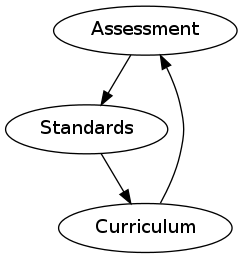Final systems visualiztion
The lnk to the final system visualization (a Prezi): http://prezi.com/cpyvgiqwobin/boxhighschool_1/Self-critique of final systems visualization
After hearing feedback from my peers about my system visualization and thinking about it some more after I had a final product, I wish I had more time to make the project more polished. From my first iteration I cleaned up the interface, make the graphics a bit cleaner, and integrated the various images a little bit better than they were integrated before.A large problem for me in this project was the integration of data - the data available on high school curricula does not lend itself well to data that evokes emotions of passion and empowerment for users, since most of the data on curricula are in the form of words. A possible solution around this would have been to create a "word web" of words that appear in curriculum standards and compare that to say a "word web" of words that appear in the mission statement of hands-on programs like FIRST Robotics. This might have gotten the point across in a different way - both with words and images. For my project I tried to evoke the message with too much metaphor, since I did not rely on enough data to get the point across. In a future iteration of this project, I would try using a word web of some kind to compare the ineffectiveness of high school curricula with the effectiveness of hands-on learning programs like FIRST Robotics.
Another possible improvement on the project would be for the visualization to be a physical interactive lesson of some kind. For example, if the visualization were a piece of paper that gave the user instructions for how to construct a box out of the piece of paper (origami-style) while giving facts about the issue at hand (including data), that might have been a much more interesting view of the entire system that did two things: communicate and demonstrate.
Overall, I thought my visual metaphors came out strong, and in the newer updated Prezi, the data was more integrated, along with some information about motivation (why we care) and solutions (how we can fix it). Together, these two things make for a much stronger project, but it could be greatly improved by the use of either word webs or some kind of interactive visualization that also demonstrated an example of the point it was trying to get across.








